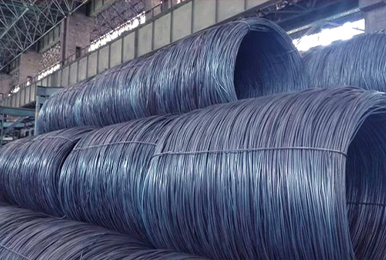авг. . 09, 2024 03:40 Back to list
Material Selection for Effective Pipe Insulation Solutions in Submerged Water Environments and Applications
Materials for Pipe Insulation Under Water
Insulating pipes that are submerged in water presents unique challenges and opportunities in the field of engineering and construction. Proper insulation is critical for maintaining the efficiency of pipelines, reducing energy costs, and preventing corrosion. This article discusses the various materials suitable for pipe insulation under water, their properties, and their applications.
Importance of Pipe Insulation
Insulating pipes in underwater environments is vital for several reasons. Firstly, it helps maintain the temperature of the fluid being transported, whether it is hot water or chilled fluids. This temperature control is essential to prevent heat loss, reduce energy consumption, and ensure the fluid remains in its desired state. Secondly, insulation plays a critical role in protecting pipes from external influences, such as cold temperatures that could lead to freezing, and corrosion caused by prolonged exposure to water.
Common Materials for Underwater Pipe Insulation
Several materials are popular choices for insulation in underwater applications, each with its unique properties and benefits.
1. Polyethylene Foam This material is lightweight, flexible, and resistant to moisture, making it a popular choice for underwater insulation. Polyethylene foam has excellent thermal insulation properties, which can help maintain the temperature of the fluid within the pipe. Its cellular structure provides a barrier to water ingress, reducing the risk of corrosion.
2. Mineral Wool Also known as rock wool or slag wool, mineral wool is made from natural or recycled materials. It is fire-resistant and has a high tolerance for high temperatures, making it suitable for pipes carrying hot fluids. However, when used underwater, it must be adequately protected from water absorption and potential degradation over time.
material for pipe insulation under water

3. Polyurethane This material is renowned for its high insulating value and durability. Polyurethane insulation can be applied as a foam that expands around the pipes, providing excellent thermal protection and resistance to environmental factors. In underwater applications, closed-cell polyurethane foam is preferred due to its low water absorption rate.
4. Fiberglass Insulation Fiberglass is a common choice for insulating pipes due to its high thermal resistance and versatility. It is lightweight and can be easily installed around pipes. However, in underwater applications, it often requires additional protective coatings to prevent water infiltration and potential degradation.
5. Silicone Rubber This material is particularly effective in underwater environments due to its flexibility, resistance to extreme temperatures, and excellent water repellency. Silicone rubber can be used as a coating for pipes or as part of a composite insulation system, providing an effective barrier against moisture.
Considerations for Underwater Insulation
When selecting insulation materials for underwater pipes, several factors must be considered. The material's thermal performance, water resistance, durability, and installation ease are paramount. Additionally, environmental factors such as pressure, temperature variations, and potential biological growth should be evaluated to ensure long-lasting performance.
Furthermore, the insulation must comply with local regulations and industry standards to ensure safety and efficiency. Proper installation techniques are crucial, as any gaps or breaches in the insulation can lead to significant energy loss and potential damage to the pipeline.
Conclusion
In conclusion, choosing the right material for pipe insulation under water is crucial for maintaining efficiency, preventing corrosion, and ensuring the longevity of the pipeline. By understanding the properties of different insulation materials such as polyethylene foam, mineral wool, polyurethane, fiberglass, and silicone rubber, engineers can make informed decisions that enhance the performance of underwater piping systems. As technology advances, innovative insulation solutions continue to emerge, promising improved performance and sustainability in underwater applications.
-
High-Quality Fe-C Alloy Leading Manufacturers & Spherical Alloy Materials Supplier
NewsJun.10,2025
-
Premium Low Nitrogen Recarburiser Supplier & Manufacturer – High Quality Exporters
NewsJun.10,2025
-
DT4 High-Quality Magnetic Materials Leading DT4 Manufacturer & Supplier
NewsJun.10,2025
-
High-Performance Spring Steel Suppliers Custom Solutions
NewsJun.10,2025
-
Premium SWRCH6A Manufacturer Steel Wire Supplier & Factory
NewsJun.10,2025
-
Premium Mild Steel Wire Rod Supplier & Manufacturer
NewsJun.10,2025
